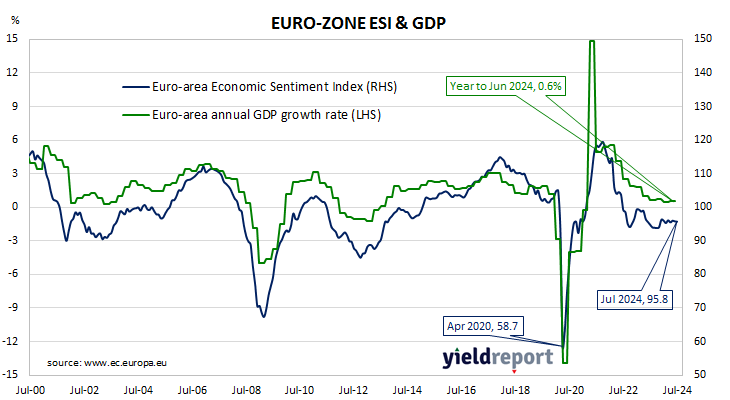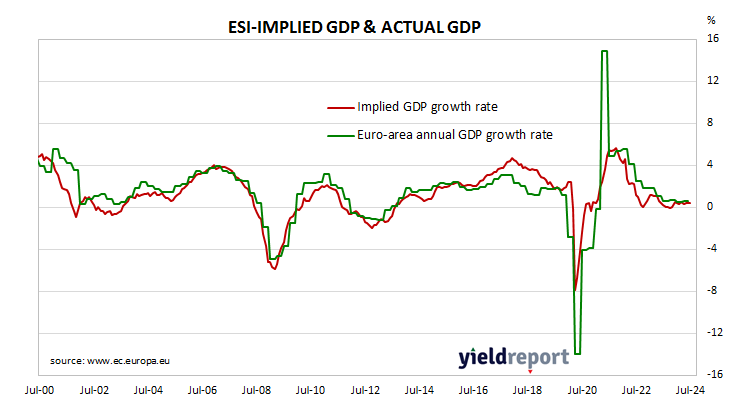Summary: Euro-zone composite sentiment indicator down a touch in July, slightly above expectations; Westpac: remains relatively soft compared to pre-pandemic levels; readings up in three of five sectors; up in three of four largest euro-zone economies; German, French 10-year yields fall; index implies annual GDP growth rate of 0.4%.
The European Commission’s Economic Sentiment Indicator (ESI) is a composite index comprising five differently weighted sectoral confidence indicators. It is heavily weighted towards confidence surveys from the business sector, with the consumer confidence sub-index only accounting for 20% of the ESI. However, it has a good relationship with euro-zone GDP growth rates, although not necessarily as a leading indicator.
According to the latest survey taken by the European Commission, confidence has remained largely unchanged on average across the various sectors of the euro-zone economy in July. The ESI posted a reading of 95.8, slightly above the generally-expected figure of 95.2, but down a touch from June’s revised reading of 95.9. The average reading since 1985 is just under 100.
“Economic confidence has been bouncing around month-to-month but remains relatively soft compared to pre-pandemic levels,” said Westpac economist Jameson Coombs.
Long-term German and French 10-year bond yields both fell on the day. By the close of business, the German 10-year yield had lost 5bps to 2.29% while the French 10-year yield finished 6bps lower at 3.00%.
Confidence improved in three of the five sectors of the euro-zone economy. On a geographical basis, the ESI increased in three of four of the euro-zone’s largest economies.
End-of-quarter ESI readings and annual euro-zone GDP growth rates are highly correlated. This latest reading corresponds to a year-to-July GDP growth rate of 0.4%, unchanged from June’s implied growth rate.



